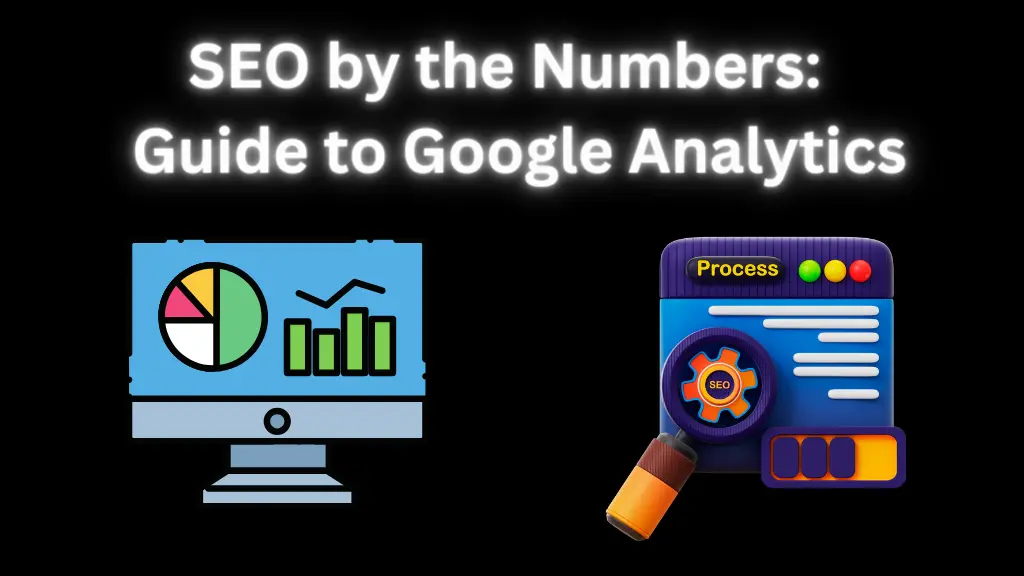Are you struggling to understand how your website’s performance impacts your SEO efforts? Look no further than Google Analytics, an indispensable tool that offers a goldmine of data to steer your SEO strategy in the right direction. In this comprehensive guide, we will walk you through the ins and outs of Google Analytics, from setting up your account to interpreting key metrics that matter most for SEO. By the end of this blog post, you’ll not only grasp the basics but also uncover advanced tactics to leverage Google Analytics to boost your website’s search engine visibility. Dive in to transform numbers into actionable insights and significantly enhance your SEO outcomes.

Table of Contents
ToggleDemystifying the Data Mine: Diving into Google Analytics Basics
Before we embark on our analytic adventure, let’s establish some ground rules. Google Analytics is a treasure trove of information, but navigating its depths requires familiarity with key terms and functionalities.
What is Google Analytics and Why Does it Matter for SEO?
Think of Google Analytics as your personalized website report card. It tracks and analyzes user behavior, providing details like website traffic, demographics, content engagement, and even conversions. For SEO professionals, this treasure trove of data unveils the effectiveness of your optimization efforts, revealing which strategies are working and which require adjustments.
Key Terminologies to Equip Your SEO Arsenal
Understanding Google Analytics is like learning a new language. Mastering essential terms like sessions, users, pageviews, bounce rate, and conversions equips you to interpret the data effectively. Don’t worry, we’ll break them down along the way!
Setting Up Your Analytics Platform: The Gateway to Insights
Before unlocking the secrets of your website traffic, you need to set up Google Analytics on your site. This process is relatively straightforward, requiring you to add a tracking code to your website’s source code. Don’t fret, Google provides clear instructions and support to guide you through this initial step.
Navigating the Analytics Dashboard: Where Information Comes Alive
Once your tracking is up and running, prepare to be greeted by a wealth of information on your Google Analytics dashboard. Don’t get overwhelmed! We’ll explore the key sections like Real-Time, Audience, Acquisition, Behavior, and Conversions, explaining what each reveals and how to interpret the data for actionable insights.
Metrics that Matter: Decoding the Language of SEO
Now that you’re comfortable navigating the Google Analytics interface, let’s dive into the data itself. Here are the key metrics you need to monitor and analyze to measure your SEO performance:
Organic Search Traffic: This metric reveals the health of your SEO efforts. Watch for steady growth and analyze traffic sources to understand which keywords and landing pages are performing well.
Bounce Rate: This measures the percentage of visitors who leave your site after viewing only one page. A high bounce rate can indicate poor content relevance, usability issues, or slow loading times. Analyze bounce rates by landing page and content type to identify areas for improvement.
Page Load Time: Speed is critical for both SEO and user experience. Monitor page load times and strive for fast loading speeds across devices. Utilize Google Analytics tools like PageSpeed Insights for detailed recommendations.
Keywords and Queries: Understand what terms users are searching for to find your site. Utilize the Search Console reports within Google Analytics to identify high-performing keywords and optimize your content accordingly.
Conversion Rates: The ultimate measure of SEO success. Track desired actions like contact form submissions, purchases, or newsletter signups and analyze conversion rates by channel, source, and landing page. Identify opportunities to improve your conversion funnel based on this data.
Optimizing Your Strategy: Turning Insights into Action
Having the right data is only half the battle. Here’s how to leverage Google Analytics to refine your SEO strategy for maximum impact:
Setting Up Goals and Conversions: Define clear goals for your website (e.g., lead generation, sales) and configure conversion tracking. This allows you to measure the effectiveness of your SEO efforts in driving desired outcomes.
Behavior Flow Report: This visualizes user journeys through your website. Analyze where users drop off and refine your content, navigation, and internal linking to guide them towards conversions.
Acquisition Reports: Analyze traffic sources to understand how users discover your site. Identify underperforming channels and invest resources in optimizing campaigns that drive high-quality, engaged traffic.
Advanced Segments: Segment your traffic based on specific criteria like device, location, or referral source. This allows for deeper analysis and the identification of specific opportunities for improvement.
Avoiding Common Pitfalls
Don’t let these mistakes derail your SEO journey:
Ignoring Internal Traffic: Filter out internal traffic so your data reflects actual user behavior.
Neglecting Mobile Performance: Mobile-first indexing is crucial. Analyze mobile traffic data and optimize your site for a seamless mobile experience.
Underutilizing Annotations: Use annotations to track changes you make to your website or external factors that might impact traffic. This helps you understand cause-and-effect relationships in your data.
Expanding Your Toolkit: Integrating for Enhanced Insights
Supercharge your SEO analysis by integrating Google Analytics with other powerful tools:
Google Search Console: Link these platforms to gain valuable insights into keyword performance, crawl errors, and backlinks.
SEO Reporting Tools: Leverage automated reporting tools to streamline data analysis and generate insightful reports for your team or clients.
Third-Party SEO Auditing Tools: Combine Google Analytics data with insights from comprehensive SEO audit tools for a holistic view of your website’s health.
Real-World Inspiration: The Power of Actionable Data
See how others have harnessed the power of Google Analytics to achieve remarkable SEO success:
Case Study 1: An e-commerce store boosted conversions by 20% by analyzing user behavior in Google Analytics and optimizing product pages for better engagement.
Case Study 2: A local business increased organic traffic by 30% by identifying long-tail keywords from Google Analytics and creating targeted content.
Lessons Learned: These success stories highlight the potential of data-driven SEO. Understand your audience, target relevant keywords, create engaging content, and optimize for conversions to achieve similar results.
Conclusion: Your Data-Driven SEO Journey Begins Now
Embrace Google Analytics as your guiding light in the ever-evolving world of SEO. Remember, the journey is continuous, filled with exploration, experimentation, and continuous learning. Keep these key takeaways in mind:
- Master the basics: Understand key metrics, reports, and functionalities of Google Analytics.
- Actionable insights: Translate data into actionable strategies to improve your SEO performance.
- Continuous learning: Stay updated with the latest SEO trends and refine your approach based on ongoing analysis.
Ready to unlock the data-driven SEO advantage? Set up your Google Analytics today, delve into the insights, and watch your organic growth soar!
Contact us for a personalized consultation on how to leverage Google Analytics for your specific SEO needs. Remember, SEO is a marathon, not a sprint!





